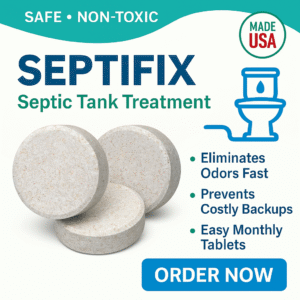When a toilet fill valve starts squeaking, sticking, or not shutting off properly, many homeowners wonder if a quick spray of WD-40 will fix the problem. It sounds like an easy solution, but is it safe or effective? Let’s break down whether WD-40 should be used on toilet fill valves, what risks are involved, and what better alternatives exist.
Why People Consider WD-40 for Fill Valves
WD-40 is widely known as a lubricant and moisture-displacing spray. Homeowners often reach for it to free stuck bolts, stop squeaks, or loosen rust. Since a toilet fill valve has moving parts, it’s natural to think WD-40 might help it work more smoothly.
However, toilet fill valves operate in constant contact with water, and that changes the situation significantly.
Problems with Using WD-40 on Toilet Fill Valves
- Not designed for rubber or plastic: Fill valves rely on rubber seals and plastic parts. WD-40 can cause rubber to deteriorate, swell, or crack over time.
- Temporary effect: Even if it frees movement initially, WD-40 washes away quickly in water, leaving no lasting benefit.
- Water contamination: WD-40 isn’t meant to be in contact with potable water and could potentially contaminate your toilet tank water.
- Masking real problems: If your fill valve is sticking, leaking, or squealing, it usually means the seal is worn, there’s mineral buildup, or the valve is failing — not that it needs lubrication.
For these reasons, plumbing professionals recommend against spraying WD-40 inside your toilet tank.
Better Alternatives to WD-40
If your fill valve isn’t working properly, try these fixes instead:
- Clean the valve: Shut off the water, remove the top cap, and rinse the seal and components. Sediment buildup is a common culprit.
- Use plumber’s silicone grease: If lubrication is needed, a small amount of silicone-based grease (safe for rubber and water exposure) works much better than WD-40.
- Adjust the float: Sometimes noise or constant running is caused by the float being too high or misaligned.
- Replace the seal: Many fill valve brands sell inexpensive replacement seals that snap right in.
When to Replace Instead of Repair
If your fill valve is older than 5–7 years, or if cleaning and seal replacement don’t solve the problem, replacement is the best option. Modern fill valves are affordable, widely available, and usually install in under 30 minutes with basic tools.
Recommended Fill Valve Replacements
Fluidmaster 400A Universal Toilet Fill Valve
- Universal fit for most toilets.
- Durable, adjustable, and widely recommended.
- Trusted industry standard.
Korky QuietFILL 2X Toilet Fill Valve
- Tool-free installation and quiet operation.
- Fits most brands and models.
- Great for bathrooms near bedrooms.
Fluidmaster 400CRP14 Complete Toilet Repair Kit
- Includes both fill valve and flapper.
- Perfect if your toilet has multiple worn parts.
- Restores full function in older toilets.
Comparison Table
| Model | Best For | Key Features | Price |
|---|---|---|---|
| Fluidmaster 400A | Everyday replacement | Universal fit, adjustable height | Check Price |
| Korky QuietFILL | Quiet operation | Tool-free install, quiet refill | Check Price |
| Fluidmaster 400CRP14 Kit | Full repair | Fill valve + flapper included | Check Price |
FAQ
- Can I spray WD-40 in my toilet tank?
No. It can damage rubber parts and doesn’t hold up in water. - What lubricant is safe for toilet parts?
Plumber’s silicone grease is the recommended option — safe for rubber and constant water contact. - Why is my fill valve squeaking?
Usually mineral buildup or a worn seal. Cleaning or replacing the seal typically solves the problem. - How do I know when to replace the fill valve?
If it’s old, cracked, or won’t stop leaking after cleaning, replacement is the best solution.
Conclusion & Call to Action
While WD-40 has many uses around the house, fixing a toilet fill valve isn’t one of them. It can damage rubber seals and won’t last in constant water exposure. Instead, clean the valve, use plumber’s silicone grease if lubrication is needed, or replace the valve entirely for a long-term fix.
For reliable replacements, the Fluidmaster 400A and Korky QuietFILL are top choices. Both are inexpensive, easy to install, and will stop that leak or squeak once and for all.
